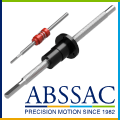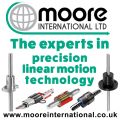
Posted to News on 12th Sep 2007, 18:09
Microstepping motor driver featuresbuilt-in translator circuitry
Allegro Microsystems Europe is launching the A4983, a compact DMOS microstepping motor driver IC with built-in translator circuitry for easy operation. It combines a user-friendly step-and-direction interface with a high output capability of up to 35V and +/-2A, as well as high-resolution microstepping control. The driver is designed for PWM (pulse-width modulation) control of bipolar stepper motors in full-, half-, quarter-, eighth-, and sixteenth-step modes, and is targeted at industrial, office automation and medical markets.

Allegro claims that the output drive capacity is significantly higher than that of most competitive devices, and provides an additional margin of safety for high-reliability designs. The use of synchronous rectification reduces power dissipation and minimises the need for expensive Schottky diodes, while the low-resistance DMOS outputs further limit power dissipation and enable higher average output currents to be used because of the lower die temperature rise.
The built-in translator circuitry makes the A4983 easy to operate and requires only two control lines compared with eight or more for competing devices. Simply inputting one pulse on the 'step' input drives the motor by one microstep. There are no phase sequence tables, high-frequency control lines or complex interfaces to program, making the device excellent for applications where a complex microprocessor is unavailable or overburdened.
Choice of decay modes
Included in the A4983 is a fixed off-time current regulator that is able to operate in slow- or mixed-decay modes; the chopping control in the A4983 automatically selects the current decay mode (slow or mixed). When a signal occurs at the 'step' input pin, the A4983 determines if that step results in a higher or lower current in each of the motor phases. If the change is to a higher current, then the decay mode is set to slow decay. If the change is to a lower current, then the current decay is set to mixed (set initially to a fast decay for a period amounting to 31.25 per cent of the fixed off-time, then to a slow decay for the remainder of the off-time). This current decay control scheme is said to result in reduced audible motor noise, increased step accuracy, and reduced power dissipation.
Internal circuit protection includes thermal shutdown with hysteresis, undervoltage lockout (UVLO) and crossover-current protection. Special power-on sequencing is not required. A 'sleep' mode with a current consumption of only 10uA is also available.
The A4983 is supplied in a 28-lead 5.0 x 5.0 x 0.9mm QFN package with exposed thermal pad (suffix ET). The package is lead-free (suffix -T), with a 100 per cent matt tin-plated leadframe.

































